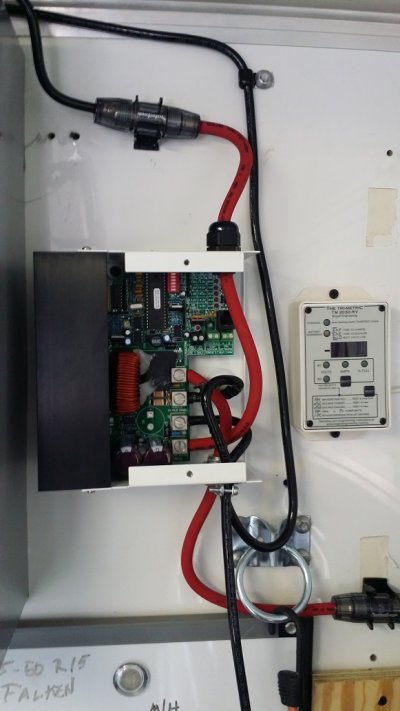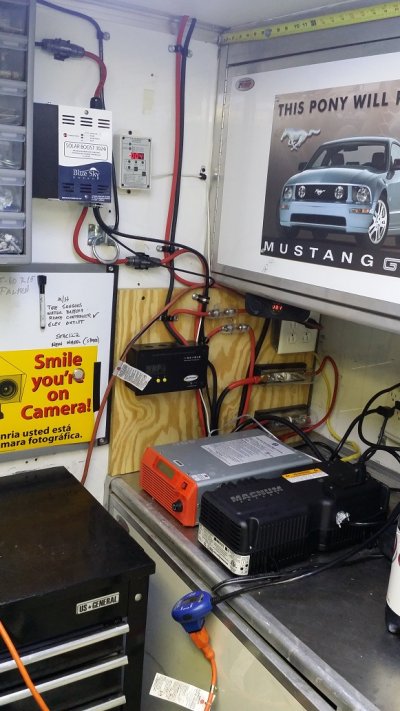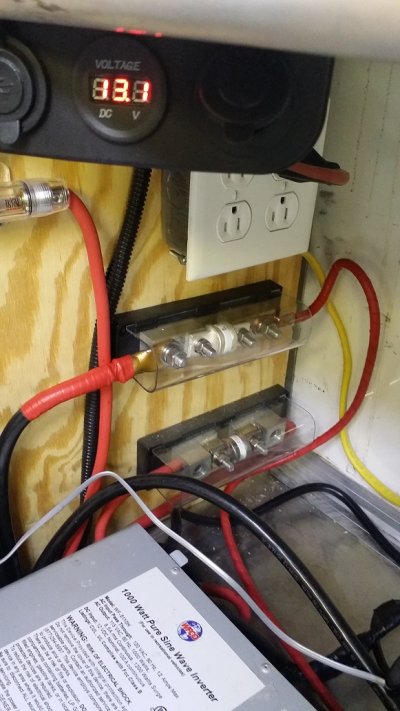blw2
Well-known member
I'm thinking through a small solar set up, just 100 watts to keep things topped off in storage...but I figure i'll prob set it up for future expansion... no more than 200-300 watts total...but all of that is just a big maybe. I currently don't have an inverter and we don't boondock nearly as much as I'd like to
Anyway
most of the kits I'm looking at don't include fusing of any sort..and some of what I'm reading indicates that it's not really needed.
Also, I'm not seeing much of anything regarding disconnects in the system.
Seems to me though that disconnecting might be "good practice" if nothing else.... the question though if I do...do I out the disconnect switch between the panels and the controller, or between the controller and battery?
ditto fuses?
Right now I'm leaning to put everything under the bed, where my converter and all the current electrical stuff is. The output side of the controller to the battery can land on the battery side of the "use/store" disconnect solenoid.....
although that concerns me slightly since I don't know for certain what parasites are tapped in between there and the battery.
There's a reasonably short drop from a panel location to this area, and everything is accessible and easy. Down side is a long run from there to the actual battery with existing (i.e. unknown length and condition) wiring ... 6 Ga according to the schematics I have from Thor
Anyway, I'm curious about your experiences and ideas about setting up such a thing....
thanks
Anyway
most of the kits I'm looking at don't include fusing of any sort..and some of what I'm reading indicates that it's not really needed.
Also, I'm not seeing much of anything regarding disconnects in the system.
Seems to me though that disconnecting might be "good practice" if nothing else.... the question though if I do...do I out the disconnect switch between the panels and the controller, or between the controller and battery?
ditto fuses?
Right now I'm leaning to put everything under the bed, where my converter and all the current electrical stuff is. The output side of the controller to the battery can land on the battery side of the "use/store" disconnect solenoid.....
although that concerns me slightly since I don't know for certain what parasites are tapped in between there and the battery.
There's a reasonably short drop from a panel location to this area, and everything is accessible and easy. Down side is a long run from there to the actual battery with existing (i.e. unknown length and condition) wiring ... 6 Ga according to the schematics I have from Thor
Anyway, I'm curious about your experiences and ideas about setting up such a thing....
thanks



